Whether you’re looking to bake bread for your family or turning this hobby of yours into a side hustle, choosing the right ingredients is the most crucial aspect in creating delicious bread.
Most bread recipes will tell you to include baker’s yeast in the dough. The use of yeast in baking has been practiced since the time of ancient Egypt.
From cream yeast to instant yeast and rapid-rise yeast, these single-cell fungi don’t just give volume to the bread, but they also help make the dough rise faster. Hence, you can produce larger loaves in a shorter period of time.
Unfortunately, not everyone can consume yeast without experiencing some side effects. Intolerance to yeast can lead to health issues such as bloating, abdominal pain, respiratory problems, and long-term skin problems.
But does that mean people with yeast allergies can’t consume bread? Definitely not. In fact, here are 21 types of yeast-free bread.
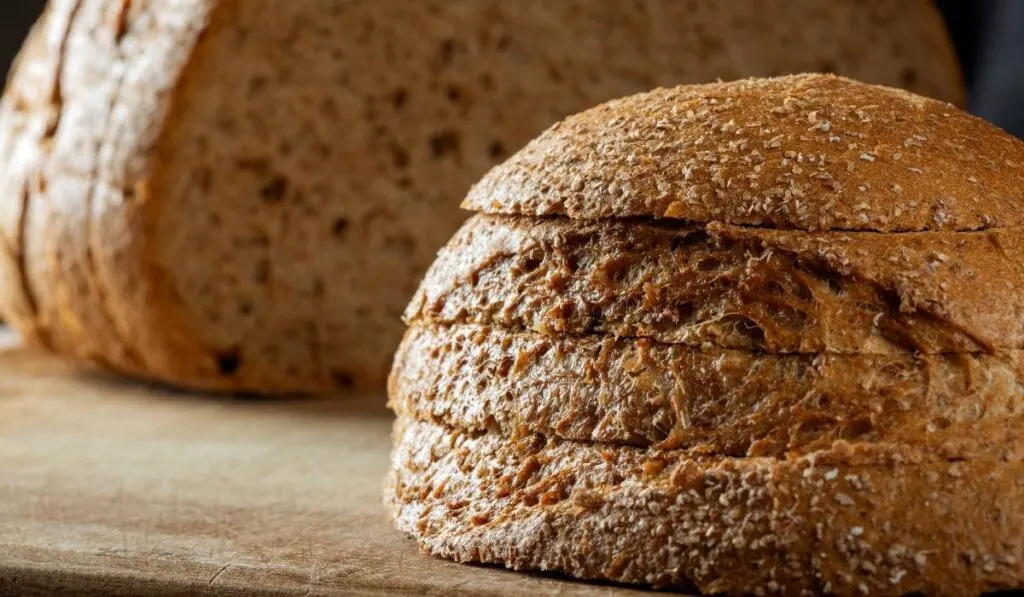
Table of Contents
1. Brown Rice Bread
Brown rice bread is baked and sold commercially as yeast-free bread. This bread is made from brown and white rice flour, leavening, vegetable oil, and salt.
You can also use flaxseeds, chia seeds, safflower oil, and natural sweeteners such as honey or agave.
Unlike other bread, brown rice bread isn’t made from wheat flour or any dairy products. Hence, it can be safely consumed by people who have gluten or lactose intolerance.
2. Australian Damper Bread
Originally made by the early European settlers in Australia, this bread was traditionally baked directly on the coals of a campfire or open fire.
Australian damper bread is yeast-free bread made from self-raising flour, butter, water, milk, and salt. You can also add some rosemary to add some savory flavor to damper bread.
One of the best things about damper bread is that it can be stored for a longer period of time.
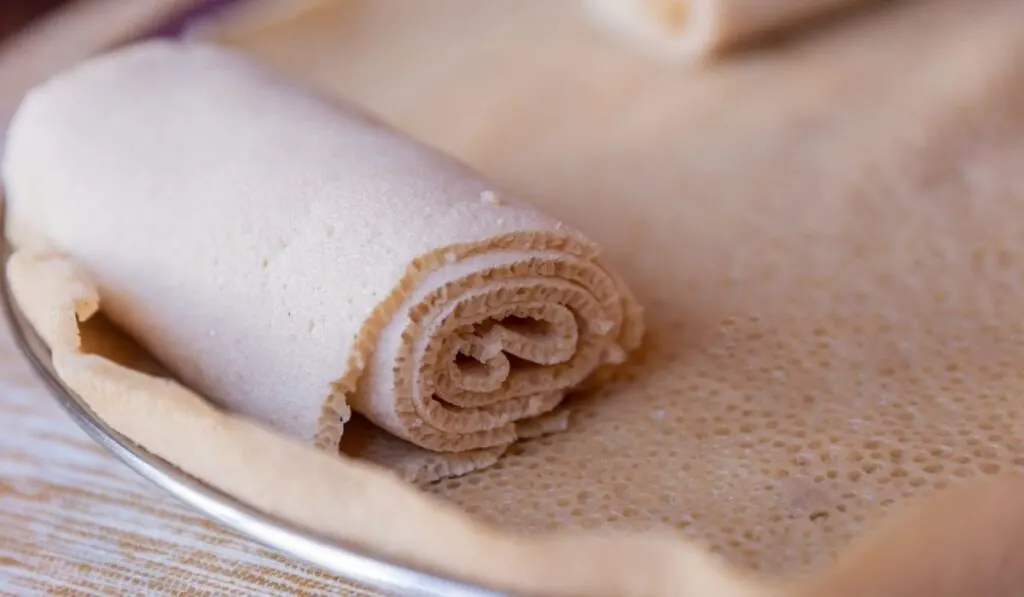
3. Quick Injera
Also known as the Ethiopian flatbread, quick injeras are made specifically with teff flour, which is a type of grain grown in that country. Because teff or teff flour is hard to find, you can also use buckwheat or wheat flour to make quick injera. Some people will also use rye flour, baking powder, salt, and white vinegar.
Then, the thick batter created from all the ingredients will be put on a stove pan or non-stick skillet and cooked into a rounded, crepe-like bread. Once baked, this bread will have a slightly sour taste.
4. Irish Soda Bread
Irish soda bread is one of the famous quick breads made from sodium bicarbonate (or baking soda). This yeast-free bread also needs buttermilk, egg, flour, butter, and salt.
Depending on the recipe or your personal choice, you can leave eggs out of the mix but don’t skip the buttermilk. This is because the buttermilk acts as a leavening agent when it is mixed with baking soda.
In as little as 10 minutes, you will have tender bread with a golden-brown crust. This bread can only last for a day or two, so it is best served while it is still fresh.
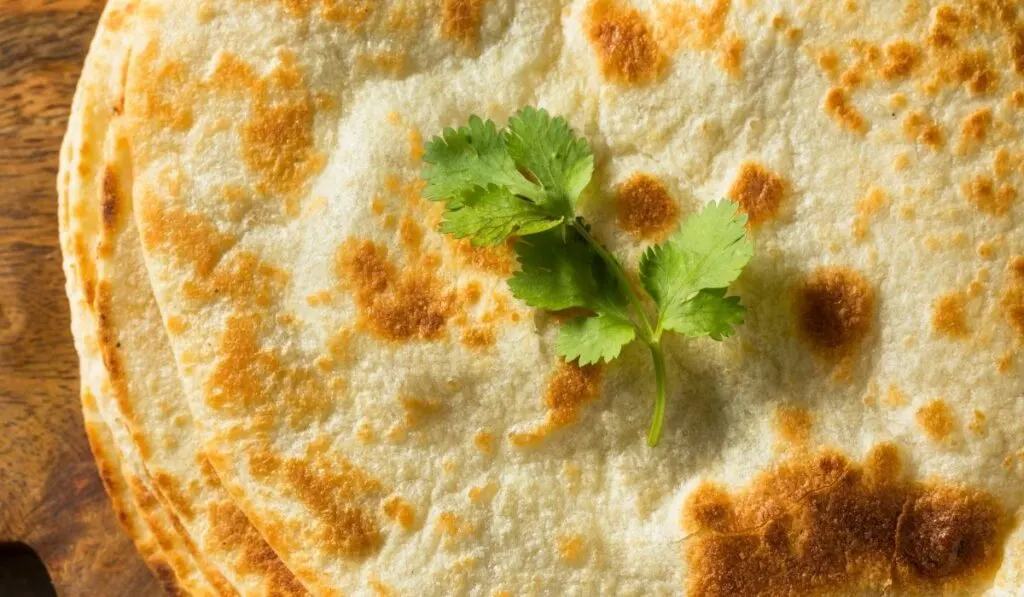
5. Chapatis
Also known as roti, phulka, roshi, shabaati, and safati, chapatis originated in the Indian subcontinent. Chapatis are one of the staple foods in Nepal, Bangladesh, Sri Lanka, India, the Caribbean, and East Africa.
These unleavened flatbreads are made from just two ingredients: atta (whole wheat flour) and water.
To make chapatis, you will also need a rolling pin to roll them as flat as you possibly could. After cooking, you can serve chapatis with curry, dal, dry sabjis, or simply use them as sandwich wraps.
6. Essene Bread
Essene bread was first made by a Jewish religious group by the same name who lived from the 2nd century BC to the 1st century AD.
This yeast-free bread is also known as sprouted bread. In some recipes, gluten and specialized flour are added to create Ezekiel bread.
To make Essene bread, you need 3 cups of dry wheat berries (sprouted wheat), vegetable oil, water, and cornmeal. To make the bread tastier, you can also add dried fruits, nuts, seeds, herbs, and even spices.
Essene bread is considered one of the healthiest types of bread you could ever bake.
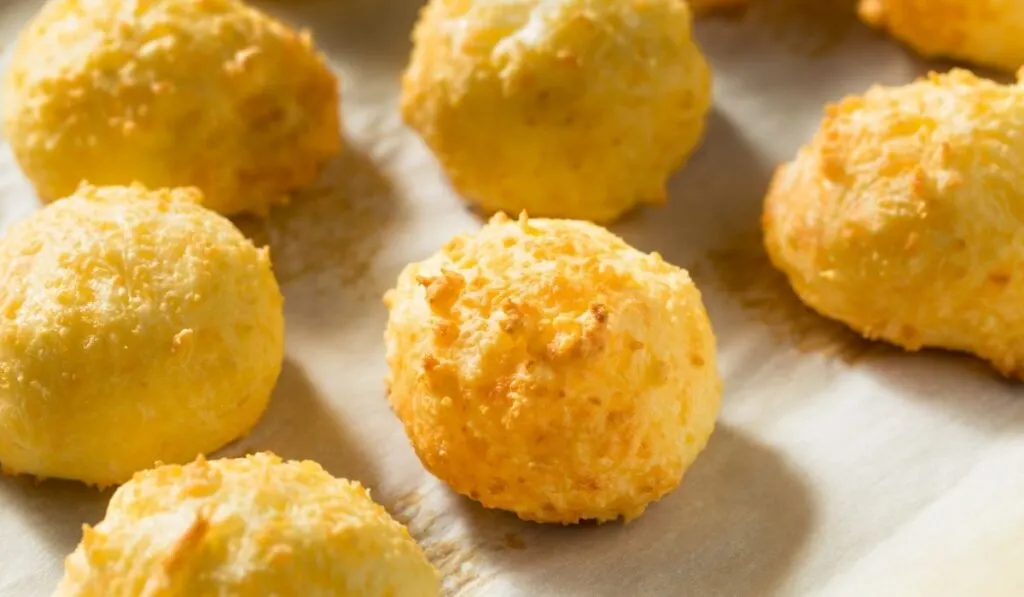
7. Pao De Queijo
Also known as the Brazilian cheese bread, Pao De Queijo originates from the state of Minais Gerais in southeastern Brazil.
This cheese bread is rolled into small balls about 1 to 2 inches wide before being cooked in an oven.
This gluten-free bread is made from tapioca flour, eggs, Parmesan or Mozzarella cheese, milk, soy milk, salt, minced garlic, butter, eggs, and water.
You can also find this bread being sold by street vendors and most bakeries in Brazil and Argentina.
8. Unleavened Lavash
Lavash is a thin flatbread hailing from western and central Asia. Also known as Armenian bread, it is popular in countries like Armenia, Iran, Azerbaijan, and Turkey.
Back in the old days, this bread was cooked in a cylindrical clay pot known as tandoor. Today, lavash can be baked in a modern steel oven.
To make unleavened lavash, you just need flour, water, salt, and sugar. To add flavors, you can sprinkle some poppy seeds or sesame seeds on top of the dough before baking.
Lavash can be kept for a longer period of time and consumed as snacks or wraps with other ingredients.
9. Dill Flakey Bread
Dill flakey bread is a tasty and yeast-free flatbread.
To make dill flakey bread, you need all-purpose flour, pastry flour, sugar, salt, oil, baking powder, chopped fresh dill, and butter.
To cook this bread, place dough on a skillet and cook each side for about three minutes until golden brown. Dill flakey bread is best served while it is hot.
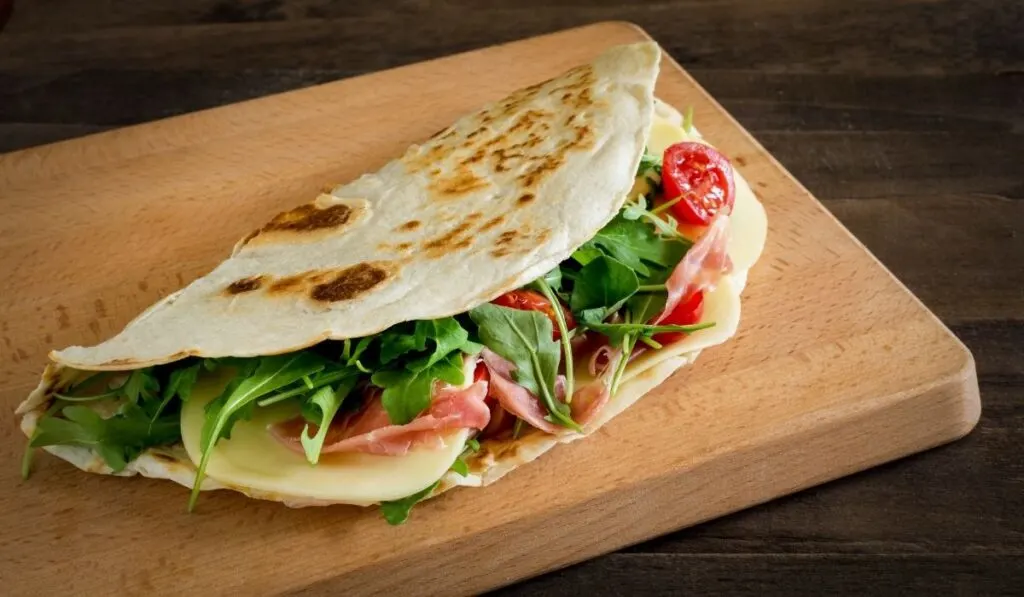
10. Piadina Bread
Piadina bread originated in the Romagna region, located in north-central Italy. These soft Italian flatbreads are easy and quick to make due to their simple ingredients.
But today, many recipes have flourished, and piadina has evolved as one of the popular Italian street foods.
To make piadina, you need flour, milk, water, lard or olive oil, baking soda, and salt. Once the bread is cooked, you can choose different fillings based on your preference.
Fillings for piadina bread include mozzarella, tomato, pesto, prosciutto, tuna with mayonnaise, Russian salad, smoked scamoza, and many more.
11. No-Yeast Whole Wheat Za’atar Bread
This yeast-free, whole wheat bread originated in the Middle East. It is also known as “mana’eesh.”
To make this bread, you need whole wheat flour and bread flour, baking soda and baking powder, buttermilk, lemon zest, sugar, salt, eggs, white sesame seeds, and za’atar (which is a mixture of spice made from sesame seeds, thyme, marjoram, and oregano).
No-yeast whole wheat za’atar bread will have a nutty, toasty, tangy, and herbal-like flavor.
12. Popovers
Popovers are an airy, quick bread that is easy to make. You only need all-purpose flour, eggs, milk, and salt to make popovers. They have the same batter as Yorkshire puddings with a thick, muffin-like texture.
To cook popovers, you can use specialized popover pans that have narrow cups or just simple muffin pans.
With their crunchy exterior and hollow interior, popovers are best served with soup or green salad during lunch and dinner.
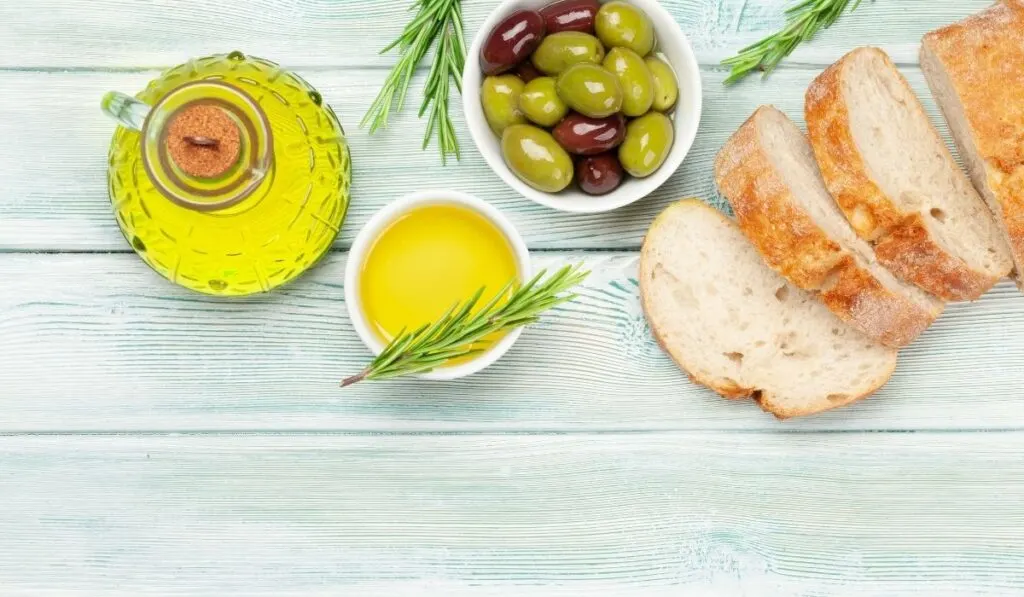
13. Olive Oil Bread
You can definitely make olive oil bread without yeast. In fact, what you really need to make this soft, thick bread is all-purpose flour, olive oil, baking powder, salt, and water.
You can fry this bread in a non-stick skillet or frying pan to have an extra crusty exterior. When separating the dough into rounds, be sure to make them similar sizes to ensure that every part is evenly cooked.
14. No-Yeast Sourdough Bread
Sourdough baking is fairly straightforward. You don’t even need yeast to produce delicious sourdough bread.
To make yeast-free sourdough starters, you only need flour and water. In some situations, you can add salt and additional ingredients such as apples to facilitate the fermentation process. Over time, more flour and water are added to make the dough rise.
Because no yeast is being used, it will take quite some time for the dough to cook. Hence, that will create a crusty exterior on the bread.
15. Jalapeno-Cheddar Beer Bread
Jalapeno-cheddar beer bread is another option for people with yeast intolerance. This bread is made from different ingredients such as self-raising flour, butter, sugar, salt, cheddar cheese, pickled Jalapenos, seasonings, and any type of beer that you prefer.
Once cooked, jalapeno-cheddar beer bread will have a moist center but crunchy exterior with a subtle sweet and spicy taste. Jalapeno-cheddar beer bread is best served with chili or butter.

16. Matzo
Also known as matza or matzah, this unleavened flatbread is part of traditional Jewish cuisine. Matzo is mainly served during the Passover festival.
There are two types of matzo: crispy, cracker-like matzos and soft, pita-like matzos.
Matzos are fairly easy to make. The ingredients you need are all-purpose flour, salt, olive oil, and water.
In the market, gluten-free and handmade matzos are quite expensive due to the way they are being processed to be free from any contamination or artificial ingredients.
17. Turmeric FlatBread
Turmeric flatbread is one of the healthy foods for vegetarians, and it is easy to make. There is also no yeast in the dough. Hence, it is also safe for people with yeast intolerance.
To make turmeric flatbread, you need flour, ground turmeric, baking powder, kosher salt, olive oil, and water.
Mix all of these ingredients and set them aside for about 15 minutes. Then, cook the dough on a skillet or stovetop until it turns golden brown.
18. Roti Canai
Roti canai or roti prata is one of the famous Indian flatbreads. It is consumed by most people in Southeast Asia, particularly Malaysia, Singapore, Indonesia, and Brunei.
Roti canai has a crispy exterior with a soft interior. It is made from plain flour, salt, sugar, and a little water. In some recipes, condensed milk, eggs, and margarine are added into the mix.
The dough is rolled thinly before being cooked on a frying pan. Roti canai is best served with any type of curry or dal.
19. Msammen
Also known as grilled flatbreads, msammen originated from Northwest Africa (specifically the Maghreb). However, it is also popular in other countries such as Algeria, Tunisia, and Morocco.
Msammen is made from different ingredients, including all-purpose flour, fine semolina, kosher salt, sugar, olive oil, and butter. Once cooked, this flat and square bread is usually served with jam, melted butter, or honey.
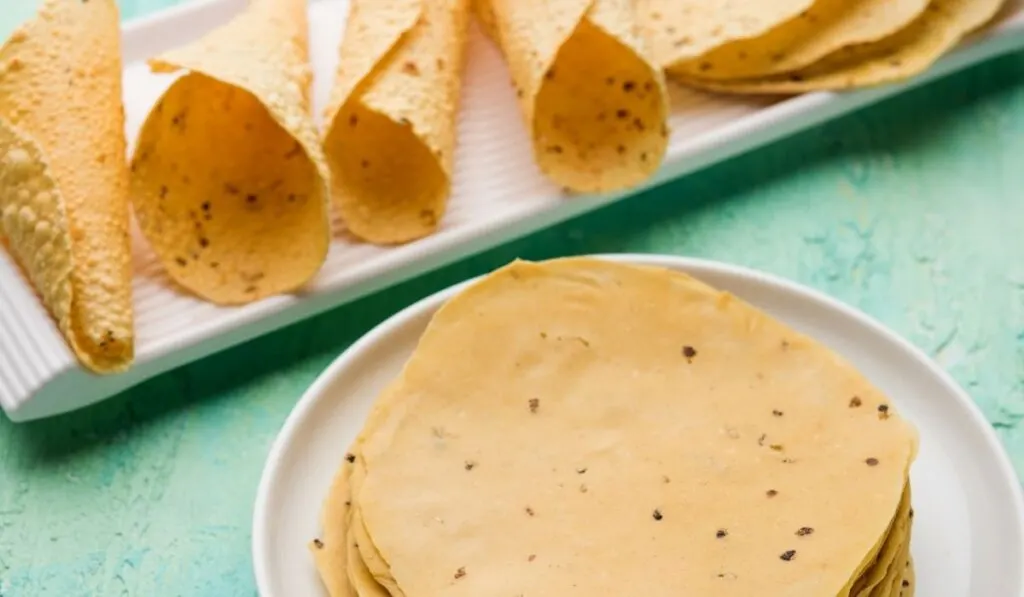
20. Papadam
Papadams or appalams are North Indian flatbreads made from different types of flour such as black gram bean, chickpeas, rice, lentils, potato, tapioca, or even millet.
This crispy and glossy waffle-like bread is usually served with other food or as regular snacks.
Papadams are generally cooked with dry heat or deep-fried until they get really crunchy. You can also use a toaster oven or microwave to cook papadam.
21. Irish Potato Bread
Also known as the Irish potato cakes or farls, this flatbread doesn’t need any yeast to be delicious. Plus, it is also easy to make.
To make Irish potato bread, all you need is flour, potato, butter, and salt. In fact, the potato in the dough is the main ingredient that will make the bread soft and moist.
If you like to experiment with different flavorings, you can add some garlic powder, Parmesan cheese, or seeds into the mix. Once cooked, you can serve this bread as standalone snacks or eat it with baked beans and bacon during breakfast.
Final Thoughts
You don’t need yeast to make delicious and long-lasting bread.
There are numerous options for ingredients that you can mix and match in creating perfectly baked delicious bread. As long as everything you put into the dough is healthy, don’t be afraid to experiment with different recipes that work without yeast.
Citations
- https://www.taste.com.au/baking/galleries/bread-without-yeast-recipes/v7caz1rq
- https://www.romper.com/p/15-bread-recipes-without-yeast-for-when-you-just-need-to-bake-22811263
- https://thewindupspace.com/how-to-make-bread-without-yeast-or-baking-powder/
- https://loafybread.com/what-bread-does-not-contain-yeast/
- https://www.foodnetwork.com/recipes/photos/breads-without-yeast
- https://www.leaf.tv/articles/which-type-of-bread-is-yeast-free/
- https://www.gamberorossointernational.com/news/food-news/yeast-free-bread-typical-products-from-around-the-world/
